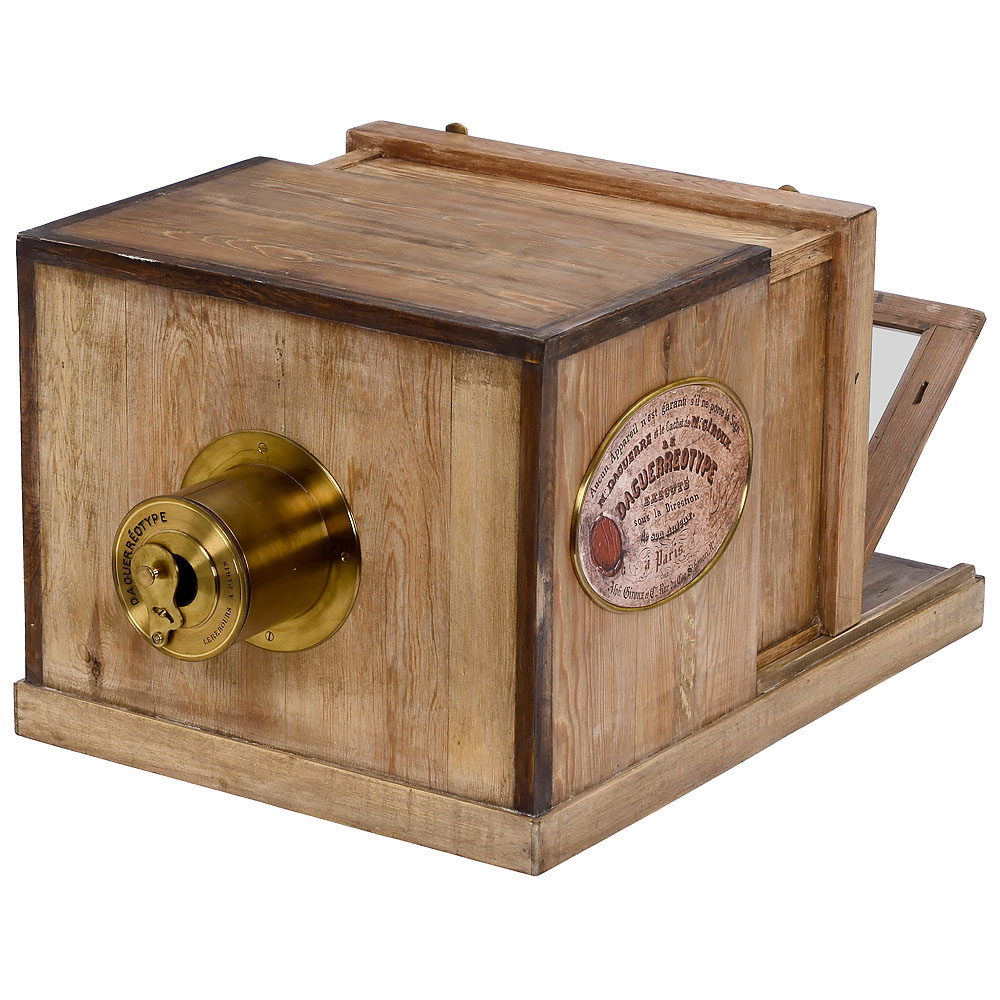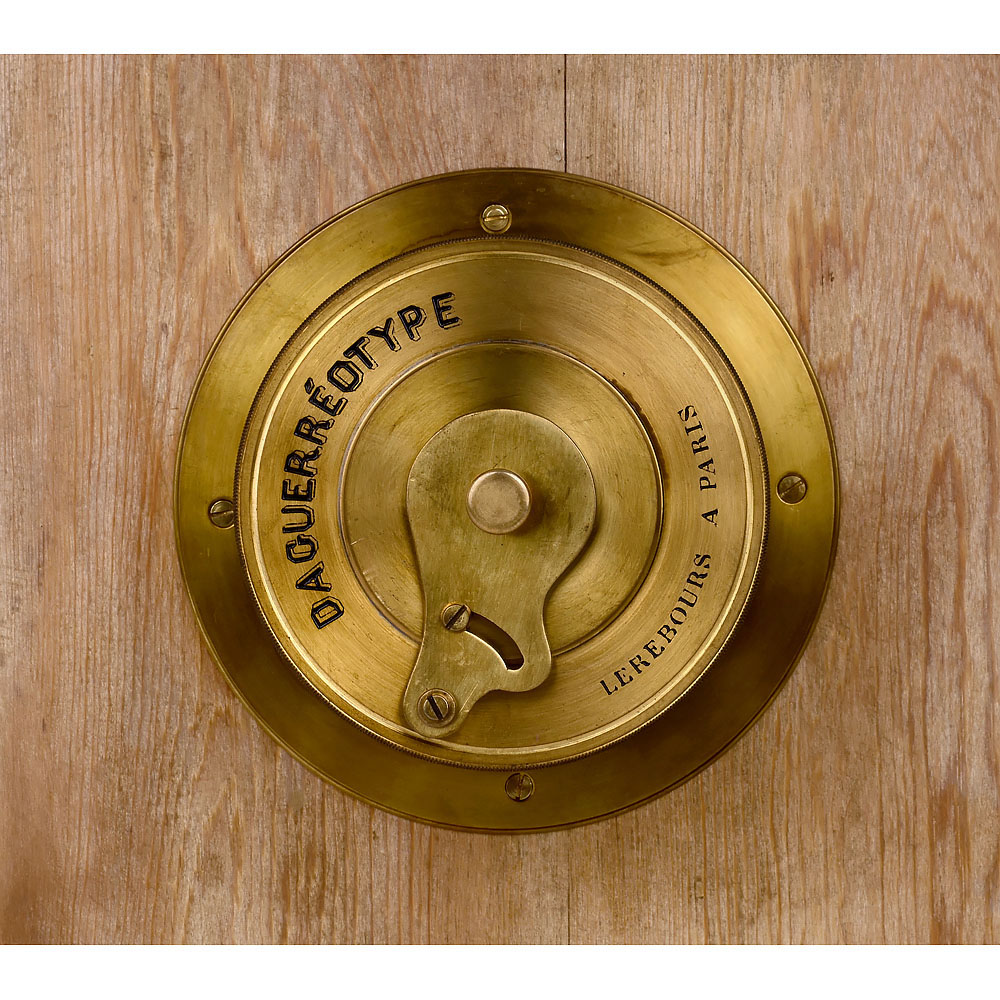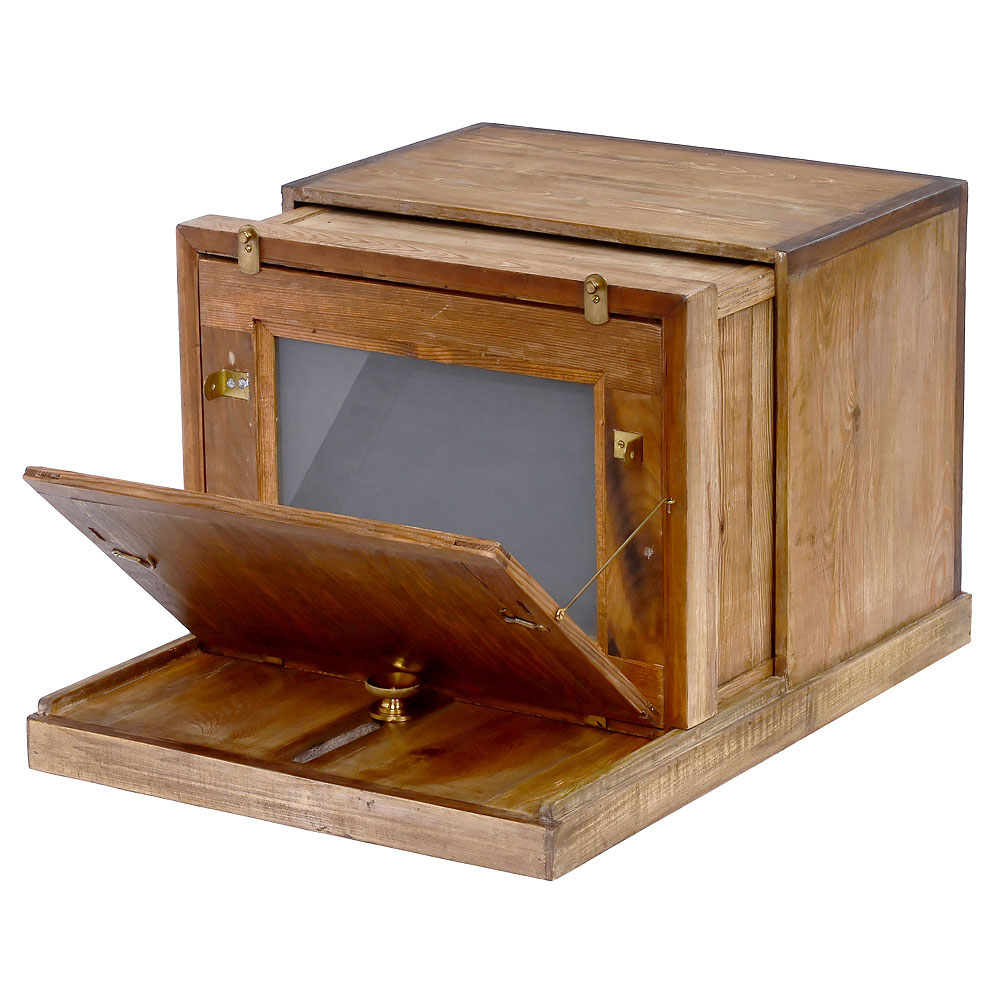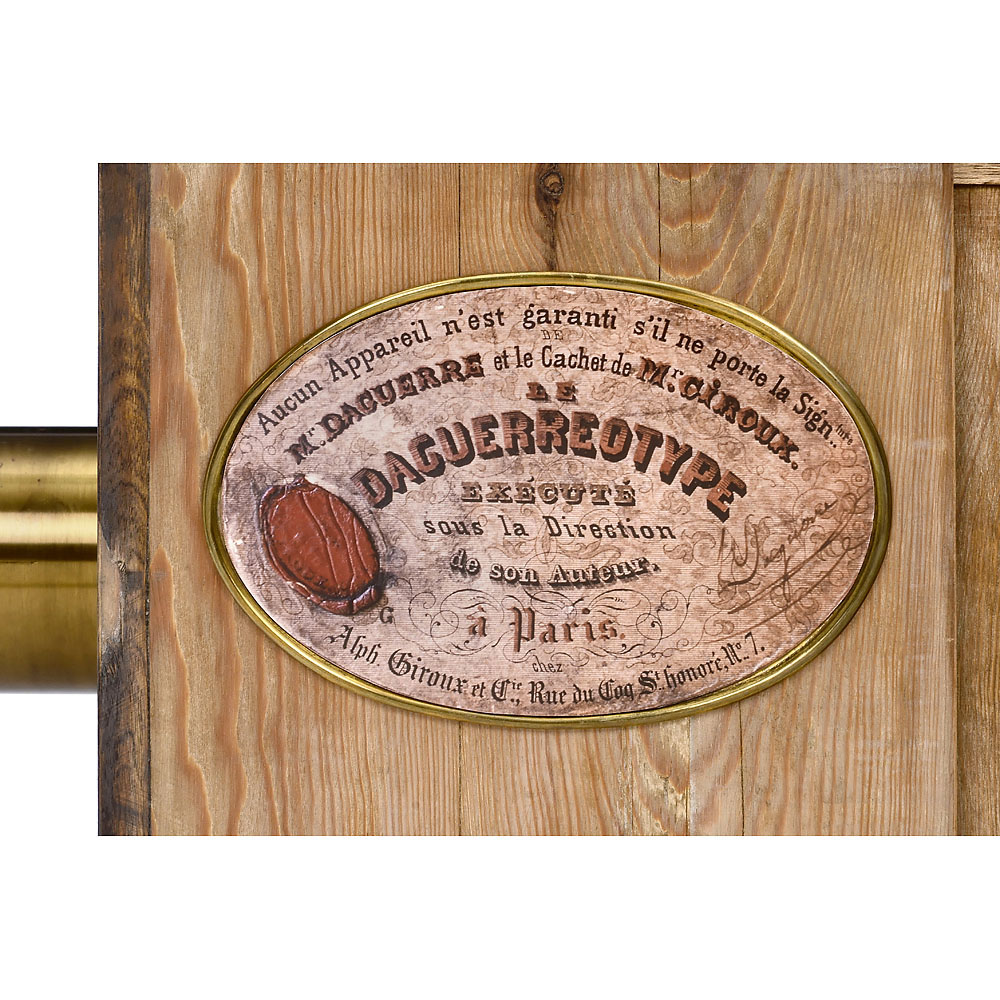Precision Replica of the Daguerre-Giroux Camera from 1839
Starting bid: € 8.000 | Estimate: € 12.000 – 16.000
An outstanding replica, assumed to be Dr. Ing. Manfried Tschierschke, Potsdam, who made in 1981 a Daguerre-Giroux camera replica for the Film Museum Potsdam and in 1989 for the Pentacon Photo Museum Dresden. What is particularly outstanding about this replica is that the lenses are as close to the original as possible. It is a (conveniently removable) landscape achromatic lens 14/34 cm. The image sharpness from center to edge is sufficiently uniform on the focusing screen, with barely noticeable field curvature; further stopping down was not possible at that time. Despite the aperture of 14, the brightness of the focusing screen is sufficient for viewing even indoors, especially since the pivoting mirror is actually considered pleasant and quite practical even for veteran large-format users. At maximum extension and with the lens pushed out of its mount as far as is reasonable, the close focus range is approx. 1.27 m from an object to the aperture. From images in publications, the Daguerre-Giroux camera is familiar as an “old camera”, but here, in this scientific replica, the camera looks as it did in its early years, still undarkened by the sun. This camera has that certain sense of youthful freshness – and may it and photography, invented in 1839 and striving for the truth of the image, be preserved for a long time to come. One of the most important replicas for any photography museum.
Präzisions-Replika der Daguerre-Giroux-Kamera von 1839
Hervorragender Nachbau, angenommen als Hersteller wird Dr. Ing. Manfried Tschierschke, Potsdam, der um 1981 für das Filmmuseum Potsdam und 1989 für das Pentacon Foto Museum Dresden jeweils eine Daguerre-Giroux-Kamera-Replika anfertigte. Ganz besonders herausragend ist bei dieser Replika, daß auch die Optik sich dem Original annähert, es ist ein (bequem herausschraubbarer) Landschaftsachromat 14/34 cm. Die Bildschärfe von Bildmitte zu Bildrand ist auf der Mattscheibe bei kaum merklicher Bildfeldwölbung genügend gleichmäßig; eine weitere Abblendung gab es damals ja nicht. Die Helligkeit der Mattscheibe reicht trotz der Blende 14 auch in einem Zimmer zum Betrachten aus, zumal der anschwenkbare Spiegel tatsächlich auch für altgediente Großformat-Anwender als angenehm und recht praktisch empfunden wird. Bei maximalem Auszug und so weit wie vertretbarem Herausschieben der Linse aus ihrer Fassung liegt die Naheinstellbarkeit bei etwa 1,27 m Abstand von einem Objekt bis zur Blende. Aus Abbildungen in Veröffentlichungen ist einem die Daguerre-Giroux-Kamera als eine “alte Kamera” vertraut, doch hier in diesem wissenschaftlichen Nachbau sieht die Kamera so aus, wie sie damals noch jung in den ersten Jahren aussah und noch nicht von der Sonne nachgedunkelt war. So hat diese Kamera jenes gewisse Etwas an jugendlicher Frische – und möge ihr und der 1839 erfundenen Photographie, die sich um die Wahrheit des Bildes bemüht, noch lange erhalten bleiben. – Eine der wichtigsten Replika für jedes Photomuseum.




